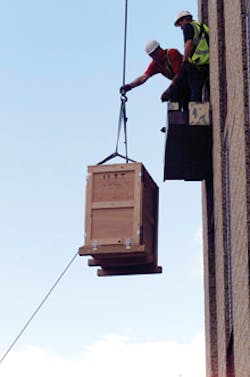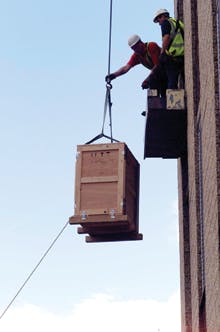BT moves ahead with 21CN
by Meghan Fuller
On November 28, 2006, British Telecom (BT; www.bt.com) officially launched what many believe ranks among the most ambitious telecom strategies to date: a wholesale swapping out of its legacy network for a converged, end-to-end, all-Internet Protocol (IP)-based network. In a recent interview, Matt Beal, chief technology officer of BT Wholesale and director of 21st Century Network (21CN) implementation and strategy, discussed BT’s progress and the challenges inherent in such a radical network overhaul.According to Beal, the carrier weighed and thoroughly modeled its options and therefore understood the enormity and potential risks of such a program before it was put in motion-and there are risks aplenty. BT will invest approximately £10 billion in 21CN, a huge capital investment by any standards.
As it turns out, it was “the money, frankly,” in Beal’s words, that led BT to adopt the 21CN program, risks and all. “In the long run, at least for a company of our similar assets and infrastructure base, this is by far the most appropriate way to take care of shareholders and customers moving forward,” says Beal. BT estimates it will save approximately £1 billion per year by 2008/2009.
Of no less importance, however, was BT’s desire to create a true multiservice network in which end users can connect to one network, regardless of how they connect or where they are connecting from. BT’s current infrastructure comprises 16 major network platforms that were deployed over the last 20 to 30 years, from the broadband platform that BT just finished implementing to its legacy analog private circuits. Each discrete platform is designed to support a particular service, making new service provisioning an arduous task. “Today,” says Beal, “if a customer is connected to one network and they want to become a customer of another product, by and large, we frequently have to provision them on a second and third network as well.”
In place of the legacy architecture, BT will deploy the more straightforward and simplified 21CN. “Into the future, we see a robust optical transport infrastructure carrying Ethernet and IP/MPLS traffic as being the way to meet all of the needs that [currently] are met by these much more complex legacy-oriented networks,” adds Beal. “And it will do so in a fashion that is much more customer-centric.”
21CN comprises five strategic domains. The access domain at the edge of the new network will link to the carrier’s existing access network. New multiservice access nodes or MSANs, designed to aggregate voice, video, and data traffic from end users onto the core IP network, will replace the service-specific equipment of the legacy network. The MSAN itself is not a single box but a set of devices that provide the multiservice access capabilities. “So, in fact, we don’t yet have-and I don’t know if telecoms will ever evolve to-a single box,” says Beal. “But what we do have is a concept that says, ‘Whether you interconnect via copper or fiber, we can bring you into a single access or set of access devices that then interface seamlessly back into the service elements that are upstream in the network.” In other words, end users will be able to access any mix of services, including voice, high-speed Internet, and high-definition television, across a single interface point.
BT reports that approximately 5,500 sites around the U.K. will house MSANs-both copper and fiber-from strategic suppliers Fujitsu and Huawei. Copper MSANs will terminate copper from end-user sites, while fiber MSANs will terminate fiber from business locations.
Beal admits that the semantics have evolved such that BT often uses the term “MSAN” when referring to both the architectural elements previously described as well as the local exchanges where those elements sit.
The second of BT’s five strategic domains is the metro node, which provides the IP routing and Ethernet and SDH switching. BT says 21CN will include approximately 100 metro nodes across the U.K., with Alcatel (now Alcatel-Lucent), Cisco, and Siemens tapped to provide the edge routers, Ethernet switches, media servers, trunk media gateways, and session border controllers that compose the metro nodes.These metro nodes will be connected via high-capacity, large-scale routers housed in the core nodes, of which BT says there will be approximately 20 throughout the U.K. Cisco and Lucent (now Alcatel-Lucent) have been selected to provide the MPLS routers.
The fourth segment, the iNode, is essentially the control center of the network and represents the only domain in which there is currently a single supplier: Ericsson. Ericsson will provide the call servers that will replace BT’s legacy voice switches and other network intelligence equipment in approximately 10 iNodes across the country. Beal notes that BT will select additional vendors for its iNode equipment over time.
The fifth and final domain within BT’s 21CN architecture is the transmission domain, which includes the fiber transport infrastructure connecting all the MSAN, metro, and core nodes as well as the electronics that provide signal conversion. BT says that most of the optical fiber already is in place. Ciena and Huawei are providing the transmission equipment, including WDM technology and high-bit-rate SDH crossconnects.
Beal is quick to note that while the U.K. network overhaul has garnered the bulk of the attention, BT is extending its 21CN model across its entire global footprint. The carrier’s IP/MPLS network spans more than 120 countries, and it is all 21CN compliant. “One of the main reasons to implement this network in a ubiquitous way both in the U.K. and globally is because it allows us to have uniformity in how we serve our customers that BT has never enjoyed before,” notes Beal. “In fact, even in today’s network, the location where you live dictates the services you can buy. To a degree, that’s always going to be a fact, but under 21CN, it’s going to be much more uniform.”
BT’s multivendor approach is itself “a transformation,” says Beal. Historically, the carrier has selected one vendor to provide a particular set of services, and 21CN, with its emphasis on open standards and multiservice capabilities, represents a radical departure from that concept. Part of that departure was born of necessity: “There is no single vendor that can actually do multiservice in a complete sense,” admits Beal. Given the scale of the project, BT also hoped to mitigate the risks associated with selecting a single supplier-both for BT’s benefit and the individual vendors’. “In putting [a vendor] singularly in front of such a big train, there was the potential you’d lock them out of doing anything else, and you’d end up stranded on your own idea,” he maintains.
But there are also challenges associated with uniting eight “arch-enemies,” as Beal puts it, in a single camp. He likens the relationships that have developed to a family. “You can bet that behind closed doors, we’ve had more than our share of fights and disagreements, but by and large, we tend to stick together when the going gets tough and work things through.”
In fact, Beal says he has been pleased with the overall level of cooperation among the vendors, even though, “at any given moment, any one of us has had challenges that have slowed the rest of us down.”
Despite the challenges-and they were anticipated-BT says it is making good progress. At press time, the carrier reported that slightly more than 20% of the core network had been built out, with “a very significant amount of the transmission infrastructure” in the ground. BT selected Cardiff in South Wales as the first city to be entirely converted to 21CN, in part because its demographics are representative of the overall U.K. market. BT reports that it has deployed more than 2,300 km of new fiber in South Wales to support 21CN services and already has migrated some 350,000 end-user lines in the cities of Cardiff, Bridgend, and Pontypridd.
In the United States and Japan, carriers like Verizon and NTT have made headlines for their aggressive FTTH implementations. For now, BT seems content to rely on its existing copper access lines, but that doesn’t mean the carrier has ruled out an FTTH strategy in the future.
Beal admits that BT “absolutely thinks quite highly of the technology,” and he notes that BT did trial FTTP among other technologies back in 2004 when it was gearing up for the 21CN build-out. In fact, Beal contends that BT understands the characteristics of FTTP “as well as any [carrier] can without actually operating it on a day-to-day basis as part of a live network.”
But BT ultimately chose not to implement FTTP as a cornerstone of the 21CN program for two reasons, says Beal: technical hurdles and the overall cost of deployment. GPON technology was not yet mature in 2004, and the cost of components prohibited wide-scale deployment. Beal also cites the FCC’s role in enabling North American carriers to roll out new fiber networks that are not subject to unbundling constraints as another reason why carriers like Verizon and AT&T have moved ahead of BT with their FTTP and fiber-to-the-node (FTTN) implementations, respectively.
That said, BT has not ruled out an FTTP initiative. “We always imagined that sometime in the future, fiber-to-the-prem deployments would have been sufficiently scaled that we would be able to benefit from the learnings and scaled economies that our peers across the industry have put into the technology,” Beal contends. “And we could very readily step into a good leapfrog position using the technology if the future allows and dictates.”Meghan Fulleris senior editor at Lightwave.



